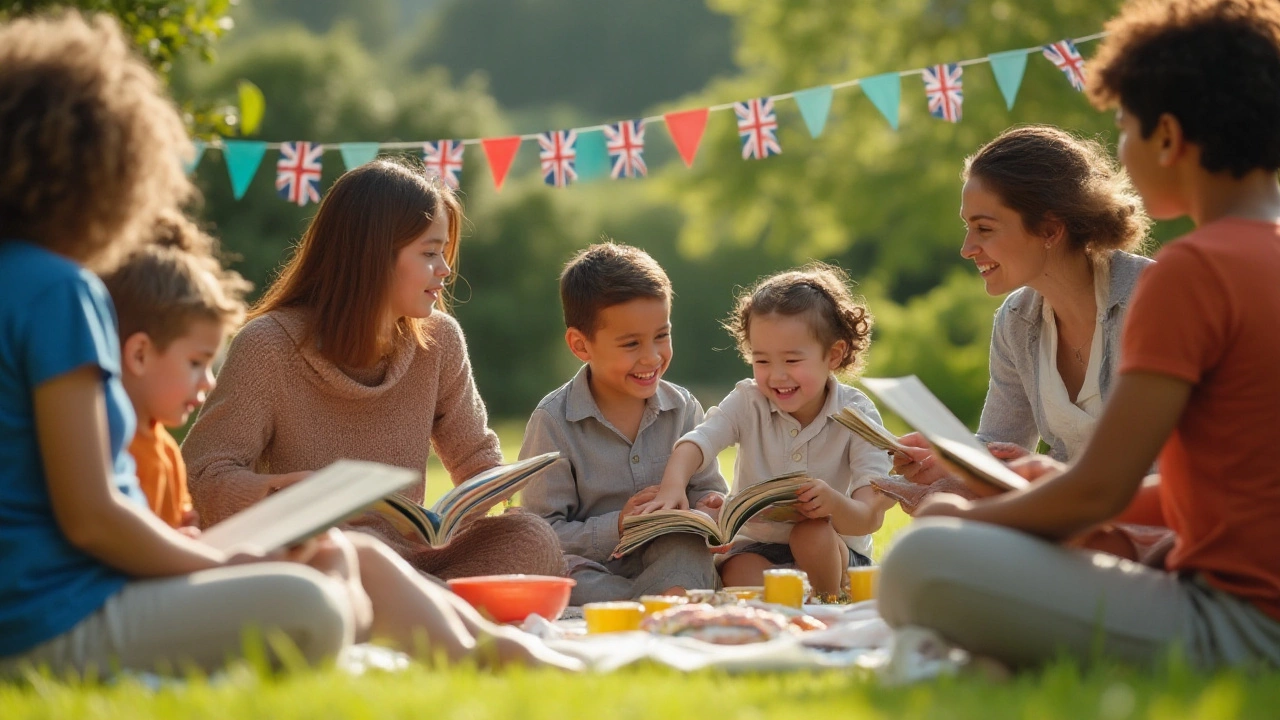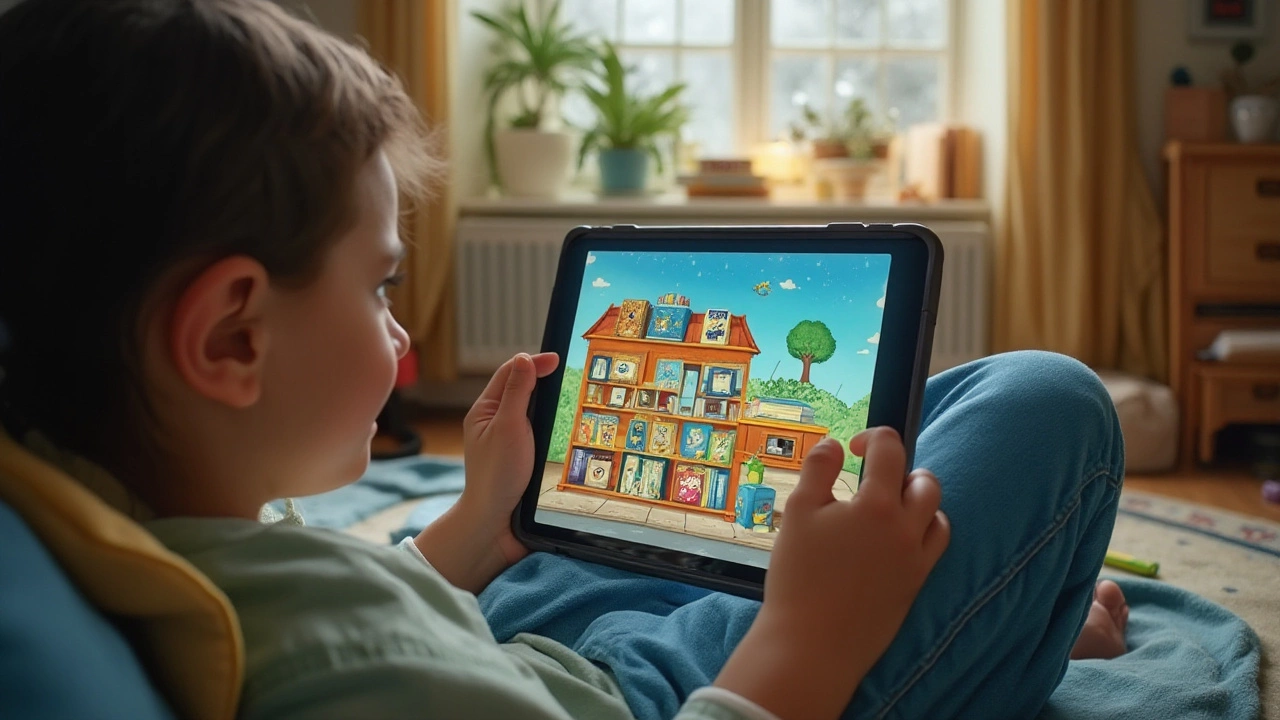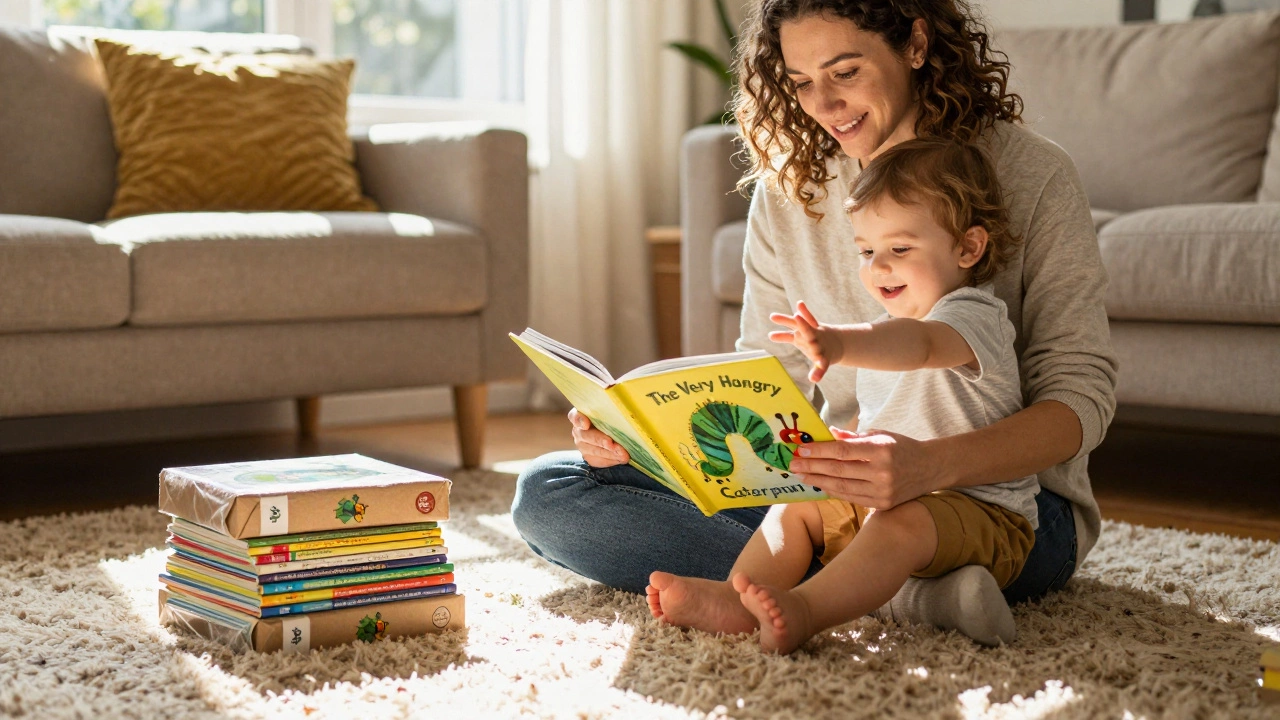Finding Free Kid's Books: A Guide to Accessible Reading

Imagine a world in which every child's mind gets to explore magical lands and heroic adventures, all through the power of reading. Not all families can afford to buy new books consistently, but that should never be a barrier to a child's love for reading. Believe it or not, there are numerous ways to get books for kids at no cost!
From local community initiatives to global organizations, resources are available to ensure that every child can have their own treasure trove of stories. Whether you're visiting your neighborhood library or using a digital app, the possibility of finding the perfect book for your young reader is always within reach. In this guide, we’re diving into a variety of resources where you can find these treasures without spending a dime, helping to nurture a lifelong love of reading in every child.
- Libraries and Community Centers
- Digital Libraries and Apps
- Book Swapping and Sharing
- Charitable Organizations and Programs
Libraries and Community Centers
Embarking on the journey to discover free children's books, one of the best places to start is with your local library and community center. Libraries have been the stalwarts of free reading materials for centuries, offering an extensive range of free children's books that cater to different age groups and interests. The beauty of libraries is not just in their vast collection of books but also in the magical experiences they create for young minds. Many libraries offer weekly story times, book clubs, and reading challenges designed specifically for children, turning reading into an engaging, social activity.
In addition to physical books, many libraries have adapted to the digital age by providing access to e-books and audiobooks through platforms such as OverDrive and Libby. These platforms allow you to borrow digital copies of books straight to a smartphone or tablet, effectively making the library accessible from anywhere. This digital expansion has revolutionized how families can access books, making it possible even in areas without a nearby library building.
Community centers also play a crucial role in facilitating children's access to books. Some host free book fairs or ‘reading days’ where children can pick out free books to take home. These events often bring communities together, creating a shared experience around the joy of reading. By involving local authors and storytellers, these centers can turn an ordinary day into an event of cultural enrichment and fun.
According to the American Library Association, "A library in the middle of a community is a cross between an emergency exit, a life raft, and a festival. Without libraries, what have we? We have no past and no future."Indeed, for those keen on nurturing a child's reading habits, connecting with libraries and community centers is a step toward endless possibilities. Libraries have educational resources and activities and often collaborate with literacy support programs to ensure everyone in the community can read every day.
For those new to exploring local opportunities, here are some tips to maximize what libraries and community centers offer. First, check the online calendar of events at your nearest library. Many host workshops that teach children how to navigate books in fun, interactive ways. Secondly, sign up for library newsletters; these will keep you informed about new arrivals and special events. Finally, don’t hesitate to talk to librarians or community staff about programs for book lending or exchanges, as they are often eager to help enhance your child's reading journey.

Digital Libraries and Apps
In the modern age, digital access to books has become a game-changer for children’s literacy. With the click of a button, kids can dive into a world of stories, enjoying the ease and convenience that digital platforms offer. Not only do these platforms provide an extensive selection of books that caters to all interests and age groups, but they also bring the unique advantage of being able to carry an entire library around in a device. This makes reading accessible anytime and anywhere.
Many digital libraries and apps offer free children's books, ensuring that young readers from all backgrounds can revel in the joy of reading. Platforms like the Open Library and Project Gutenberg have impressive collections that include a plethora of books for young readers at no cost. The Open Library strives to keep a one-to-one ratio with its physical library counterparts, giving kids access to countless titles, from timeless classics to contemporary reads.
In addition to these expansive libraries, educational apps dedicated to enhancing literacy skills have surged in popularity. Apps like Epic and Libby are celebrated for their child-friendly interfaces and their remarkable selection of age-appropriate literature. With Libby, an offshoot of OverDrive, all you need is a library card to access a vast collection of ebooks and audiobooks from your local library, making it a valuable resource for parents and educators alike.
It's not only about the quantity of books available but also the quality and breadth of the reading experiences. Many apps provide features such as narration, interactive elements, and recommendations based on reading preferences. This personalized experience can significantly motivate young readers. As Marcus Rashford, an advocate for children's literacy, puts it, "Books have the ability to take you to any place, real or imagined."
This remarkable perspective underscores the importance of making reading accessible to all children, and digital libraries and apps are playing a key role in that mission.
Digital platforms don’t just support solitary reading experiences. They often incorporate interactive features like reader feedback, quizzes, and discussion boards, allowing children to engage deeply with the material they read. This engagement is particularly beneficial for encouraging discussion around books, helping children develop critical thinking skills. To effectively make use of these digital resources, parents and educators can explore options to customize their children's reading experiences by selecting language settings, adjusting reading levels, or utilizing parental control settings to ensure a safe and enriching reading environment.

Book Swapping and Sharing
There is something inherently magical about stepping into a world of both giving and receiving, and that's precisely what book swapping offers. It’s not just a matter of exchanging old reads for new adventures; it creates a sense of community and shared enthusiasm around books. Through book swapping, the principle is simple and sweet: literature shouldn't have barriers. Whether you’re part of an official program or a small neighborhood initiative, you might be amazed at how many beloved tales are sitting untouched, ready to be passed on to another eager reader.
Local swap events offer a fantastic opportunity to meet other book lovers who are just as passionate about sharing literature. These gatherings often occur in community centers or libraries and foster a sense of camaraderie among participants. Some places even host seasonal swapping events where families can bring children's books that are gathering dust and trade them for new wonders. Imagine the joy on a child's face when they discover a heap of stories, ready and waiting just for them. A book swap can introduce children to stories they would never stumble upon in traditional retail spaces.
In addition to in-person swaps, there are numerous online platforms dedicated to book exchanging. Websites like BookMooch and PaperBackSwap allow users to trade books through an online point system. It’s straightforward: list the books you’re willing to send off, and in return, snag a few new titles for yourself from other members' collections. Not only does this widen your access to free children's books, but it also reduces demand for new books and promotes environmental sustainability as more individuals reuse materials rather than buy new.
Little Free Libraries
Another inspiring initiative is the Little Free Library project, which has sprouted around the globe. These small, charming wooden boxes, usually installed in neighborhoods and parks, enable people to leave books they no longer need and pick up ones they wish to read. The ethos of "take a book, leave a book" has inspired countless families to share their used children's books, ensuring the flow of stories remains rich and diverse. According to Little Free Library's 2023 data, over 150,000 of these libraries are found in various nooks and crannies around the world. Quite the achievement and a testament to the power of community-driven literacy support!
"The smallest bookstore still contains more ideas of worth than have been presented in the entire history of television." — Andrew Ross
Getting involved in book sharing activities provides a wonderful educational experience for kids. They learn not only the importance of nurturing a habit of reading but also the value found in exchanging stories with others. This practice encourages empathy, as children get to delve into different perspectives and cultures that books provide. Perhaps it’s worth considering that the next little book a child swaps into their hands could be the very seed that grows a lifelong love of reading, opening doors to endless explorations and discoveries. So why not participate in the joy of giving and receiving in the realm of children's literature?

Charitable Organizations and Programs
Charitable organizations have long understood that providing access to free children's books can significantly impact a child’s educational journey and ignite a lifelong passion for literacy. Many of these organizations have created innovative programs aimed at making books available to families from diverse socio-economic backgrounds. One of the most well-known programs is Dolly Parton's Imagination Library, which mails free books to children from birth until they begin school. This initiative has reached millions of young readers worldwide, showing that even a single book each month can make a difference over time.
Another significant player in this arena is First Book, an organization that partners with educators and other community members to provide books, educational resources, and basic needs to children in need. First Book takes a unique approach by directly distributing new books and learning supplies to economically disadvantaged schools and programs. Since its inception, the organization has distributed over 200 million books and resources, underscoring the importance of providing all children with equal access to learning materials.
In addition to these large-scale programs, local charitable initiatives often focus on book distribution at a community level. Programs like Reach Out and Read train pediatric healthcare providers to give books to children during well-child visits. This approach not only puts books in the hands of eager young readers but also integrates reading into the healthcare routine, emphasizing its importance from an early age. An inspiring example of this model in action is documented by Reach Out and Read National, which notes, "Giving books to children during visits not only supports literacy, it strengthens the parent-child bond," highlighting the emotional and developmental benefits of reading together.
For families looking to tap into these resources, understanding how these organizations operate can be incredibly beneficial. Many of them work through partnerships with schools and libraries, making it easier for families to access books through existing educational frameworks. A good starting point is to inquire with local libraries or schools about participating in these programs. It's also helpful to visit the websites of organizations like Book Trust, which empowers children from low-income families to choose and own books - a joyous and transformative experience. These initiatives are constantly evolving, finding new ways to meet the growing need for kids reading resources.
While individual organizations may have unique methods of distribution, their underlying goal remains the same: to overcome the barriers to book access and foster a love of reading. By supporting these efforts - whether through volunteering, donations, or spreading the word - anyone can contribute to a world where every child has the resources to embark on their own reading adventures. In a world where it's easy to feel disconnected, these charitable programs remind us of the enduring power of community. They bridge gaps, inspire hope, and most importantly, help nurture dreams and imagination through the simple, profound act of reading.

